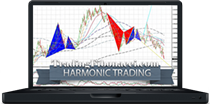Forex Trading Tips
Seven Essential Tips to Trade Forex Effectivelly
TIP (1): Understand What you are Trading
First of all, you need to understand what you are trading. Many investors believe that trading Forex currencies is the same as trading stocks or indices. They are 100% wrong. Trading Forex is a completely different story than trading any other financial market. The Forex market is characterized by 24/5 operation, enormous liquidity, extremely tight spreads, and almost perfect information. The combination of these four factors creates an ideal framework for competitive trading.
Forex is the Most Competitive Market Worldwide
The Forex Market is the most competitive financial market in the world, and this is due to several reasons:
-
There are millions of real currency buyers and sellers every single day (banks, importers/exporters, tourists, etc.)
-
There are millions of active Forex traders, and a great number of them trades currencies as a day job. Forex traders contribute about 95% of the aggregate market volumes
-
There are also thousands of arbitrageurs operating on a daily basis and enhancing further the liquidity of the market
-
There are many hundreds of retail and institutional Forex Brokers, NDD (Non-Dealing Desk) or DD (Dealing-Desk)
-
The aggregate market volume exceeds 4 trillion US Dollars on a daily basis
-
The Foreign Exchange Market enjoys almost perfect information (24/7 basis)
-
The Forex majors (EURUSD, USDJPY, GBPUSD, USDCHF) are offered in tiny spreads. It is cheaper to trade these four pairs than anything else in our financial world.
TIP (2): Best Time to Trade the 24/5 Forex Market
Timing is very important when you are trading currencies or any other financial instrument. The spreads and the liquidity of the market can make enormous shifts from time to time. In general, the best time to trade Forex is:
■ 10:00 – 17.00 PM (GMT)
During these 7 hours, the Forex market's liquidity peaks.
In terms of liquidity and price volatility, the best days to trade Forex are:
■ Tuesday, Wednesday, Thursday
The Forex Market Sessions
The Foreign Exchange Market is a 24/5 OTC market. Every trading day is divided into 4 sessions, as follows:
■ Summer Timezones (April–October)
|
Time Zone |
EDT |
GMT |
|---|---|---|
|
London Open / London Close |
3:00 AM to 12:00 PM |
7:00 AM to 16:00 |
|
New York Open New York Close |
8:00 AM to 17:00 |
12:00 PM to 21:00 |
|
Sydney Open / Close |
18:00 to 3:00 AM |
22:00 to 7:00 AM |
|
Tokyo Open / Close |
19:00 to 4:00 AM |
23:00 to 8:00 AM |
During Winter, there are some changes in the Forex Market hours, as follows:
■ Winter Timezones (October-April)
|
Time Zone |
EDT |
GMT |
|---|---|---|
|
London Open / Close |
3:00 AM to 12:00 PM |
8:00 AM to 17:00 |
|
New York Open / Close |
8:00 AM to 17:00 |
13.00 to 22.00 |
|
Sydney Open / Close |
16:00 to 1:00 AM |
21:00 to 6:00 AM |
|
Tokyo Open / Close |
18:00 PM to 3:00 AM |
23:00 to 8:00 AM |
The Forex Market Overlaps
Session overlaps occur when two Forex sessions are opened simultaneously. During these overlaps, the trading activity booms. These are the three overlaps in the summer timezone:
(i) London and New York Overlap: 12:00 PM TO 16:00 GMT
(ii) Sydney and Tokyo Overlap: 23:00 to 7:00 AM GMT
(iii) London and Tokyo Overlap: 7:00 AM to 8:00 AM GMT
In general, the best hours to trade Forex occur during the London and New York overlap. We can extend this timeframe to include one hour before the New York opening and two hours after the London session closing. That means:
■ 10:00 – 17.00 PM (GMT) or else 6:00 AM 1:00 PM (EST)
More: https://forexexperts.net/index.php/learning/best-forex-time
TIP (3): The Importance of the US Dollar
The Forex market incorporates several mechanisms, let's see some of these mechanisms and their effect on particular currencies:
(1) The US Dollar is going up and everything else is going down
(2) The US Dollar is going down and everything else is going up
(3) The price of Gold is going up and the Australian Dollar is going up
(4) The price of Crude Oil is going up and the Canadian Dollar is going up
(5) The Dow Jones Industrial is going up and USDJPY is going up
From all these 5 common mechanisms you should focus on (1) and (2). The US Dollar is involved in about 85% of all Forex transactions. Consequently, you must always keep an eye on the US Dollar Index.
US Dollar Index Resources:
► https://www.bloomberg.com/quote/DXY:CUR
Note that the Euro is involved in about 39% of all transactions, the Japanese Yen 19%, the British Pound 13%, and the Swiss Franc 6.5%. Combining these numbers you can understand which Forex pairs are the most traded Forex pairs worldwide.
TIP (4): The Essence of Selective Trading (Essential Steps)
You can't trade Forex any time you like. If you do that you will end losing money. These are some essential steps to identify and to select profitable trades:
Identifying Promising Trades
(1) Find Forex pairs that are trending in the D1 chart
(2) Understand the direction of the trend and confirm it in the H1 chart
(3) Draw Key Trend lines and Major Support / Resistance levels in your charts, in order to use them later
(4) Check MACD in the D1 chart. Make sure that you are not trading against divergences between the slope of the MACD histogram and the Price slope.
(5) Make sure also that RSI (21) in the D1 chart is moving favorably. If RSI (21) is above 70 and slopes down the market will probably go down. If RSI (21) is below 30 and slopes up the market will probably go up.
And after,
(6) Make sure you are not trading before major news releases (use an online news calendar for that job)
(7) Create a Trigger for entering the Trade (candlestick formation, chart pattern, break of major support/resistance)
(8) Confirm your entrance with RSI (21) in the M5 chart. Just make sure that RSI(21) is moving in your direction the same way as explained in step-5.
(9) Enter the Trade by risking no more than 2% of your total trading capital
(10) Place the Right Stop-Loss and Take-Profit order
If you can perform these 10 steps with discipline and precision you can achieve huge profits in the long-run.
TIP (5): Identifying the Trend
These are some tips for identifying the trend of the market at any time.
Three Market Phases
Currency pairs are moving constantly in three phases:
(a) Trending Phase
(b) Consolidating Phase
(c) Reversal Trending Phase
The (a) and (c) phases create trending markets, the (c) phase creates ranging markets
You can trade all three phases but it is better to avoid phase (c). You can only trade phase (c) if the price consolidates in a broader range of more than 100 pips. In that case, use pending orders to buy/sell the market close to the two boundaries of that range.
Methods for Identifying the Trend
The identification of the trend can be made using several methods:
(1) Visually in the Daily Chart {highest high / lowest low method}
(2) By combining three Moving Averages {for example, MA(34), MA(144), and MA(233)} and observe their alignment of these 3 MAs in the H1, H4, and D1 timeframes
(3) By using MACD in the H1, H4, and D1 timeframes
TIP (6): Creating Triggers for Entering Trades
Being able to identify the trend is crucial but creating the right trigger is very important as well.
You can use several triggers for entering trades:
(a) Identifying Japanese Candlesticks
(b) Identifying Chart Patterns
(c) Identifying the break of a Historical Support / Resistance
(d) Identifying changes on the MACD Signal Line or Divergences between the MACD Histogram slope and the Price slope
For example, here is a simple strategy when using solely major support/resistance as your trigger method.
Case-(i) The Trend is Bullish
(1) Identify major resistance levels by combining historical support with Fibonacci levels
(2) Wait until a bar closes above the first resistance level (R1)
(3) Enter the trade In the direction of the crossover (buy the market)
(4) Place your stop-loss below the first candle that crossed above the resistance level (R1)
(5) Place your take-profit below the next resistance level (R2)
Case-(ii) The Trend is Bearish
(1) Identify major support levels by combining historical support with Fibonacci levels
(2) Wait until a bar closes below the first support level (S1)
(3) Enter the trade In the direction of the crossover (short the market)
(4) Place your stop-loss above the first candle that crossed below the support level (S1)
(5) Place your take-profit above the next support level (S2)
TIP (7): Enhancing Further your Trading System
When you trade any financial market, information is power. These are two important information sources that can enhance your trading process:
(i) COT Analysis based on Forex Futures and Forex Options
(ii) Seasonal Statistics
(i) COT Analysis based on Forex Futures and Forex Options
COT or Commitments of Traders refers to a report that is published by the CFTC which presents the aggregate short and long trading positions in the US Futures Market. The Commitments of Traders is used as an indicator of the general market sentiment. Focus on the positions of Non-Commercial Traders.

COT Resources:
► https://tradingcenter.org/index.php/learn/fundamental-analysis/289-cot-report-cftc
► https://www.cmegroup.com/tools-information/quikstrike/commitment-of-traders-fx.html
(ii) Seasonal Statistics
One smart way to enhance your trading system is to add seasonality data. There are very good reasons for some currencies to perform better during certain months of the year. For example, the Euro overperforms during December but underperforms during January.

■ Forex Trading Tips
TradingFibonacci.com (c)
Trading Tutorials: » Fibonacci Sequence and Phi | » Introduction to Money Management | » The History of Foreign Exchange











